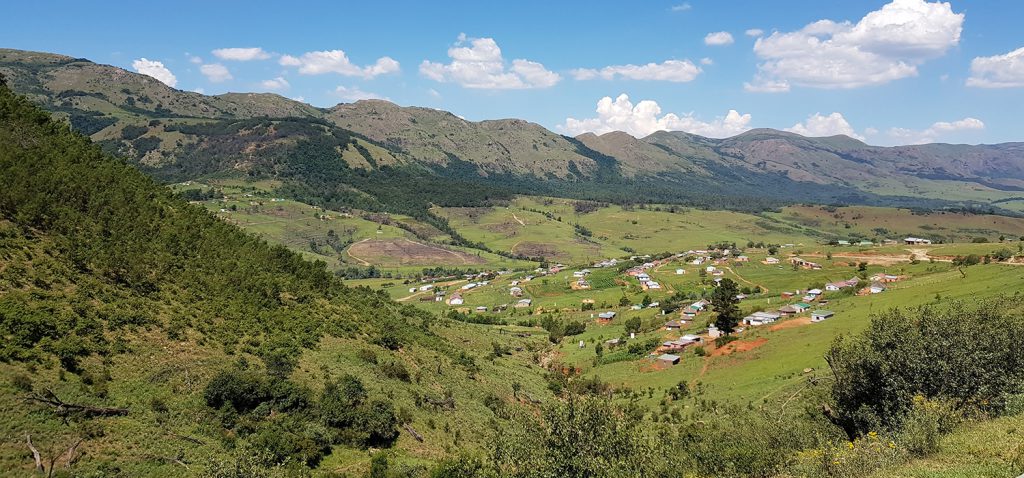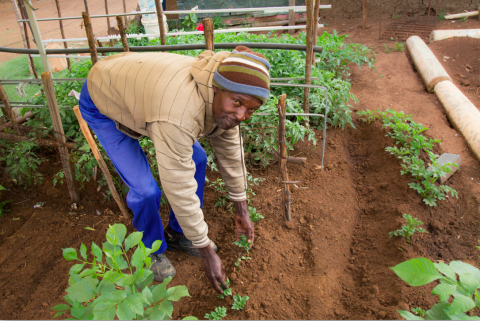Sunday Times Green
From Wood To Wonder
In the new normal of us all experiencing the very real effects of climate change, and the alarm bells ringing across the planet that we have a maximum of 10 years to turn around the course of our planet’s decline into global natural disaster, the race is on to find effective mitigating technologies and solutions. South Africa has some very real challenges to overcome: immediate threats to food and water security, and our drive to reduce greenhouse gases that contribute to global warming. Contributing to our food and water security crisis is the unfettered spread of Invasive plants (like wattle, gum and port jackson) that destroy viable soils, reduce arable land available, and drain rivers and water tables of water. Systemic solutions are urgently needed to stem this trend. Enter Biochar as a solution that has the potential to solve some of these challenges.
What on earth is Biochar?
Schouten defines is as a fine-grained charcoal-like material created by pyrolysis which involves the burning of biomass in the absence of oxygen. It differs from charcoal in that its primary use is not for fuel, but as a soil quality enhancer. Its’ exciting added benefit is that it can also capture and store carbon dioxide.
Because of its ability to amend soil quality, including reducing leaching of nutrients, soil acidity, reduction in fertilizer use, increased soil water retention and irrigation requirements, biochar has recently gained keen attention which could make it the sole form of carbon sequestration that is feasible at large scales. Schouten suggests that, besides the sequestration of carbon, biochar may reduce the climate impact of agriculture by suppressing emissions of methane and nitrous oxide and by lessening the amount of artificial fertilizer needed for crop growth . Deem and Crow suggest that this comes in as a solution for sustainable agriculture which is difficult in tropics because of the rapid degradation of soil organic matter in some soils as a result of limited stabilising minerals in a hot and rainy climate.
Now we know but why the fuss?
Because of its importance in terms of carbon sequestration and soil improvement, biochar has gained interest recently. It has been currently promoted as a way to initiate a “doubly green revolution” by potentially addressing soil greenhouse gas emissions and food security (Barrow, Deem and Crow) and it is being targeted in tropical soils where sustainable agriculture is difficult. Hofstraden suggests that biochar creates major benefits including the improvement of the productivity of soil to achieve higher yields; the creation of a bioenergy as a substitute for fossil fuels; sequestration of carbon in the soil that will reduce atmospheric carbon dioxide and the management of waste.
Not only can it be used for enabling soil functioning, but it can also be used for water treatment, the treatment of waste spills onto soils and water bodies, aquaculture additives to animal feed and additives to manure or compost. But the most virtuous production and application of biochar is when the feedstock originates from invasive trees and plants which cause billions of Rands’ damage to the economy through water loss and biodiversity impact. Biochar production from invasive trees could add value to this resource and recover some of the cost of clearing it, while simultaneously enabling water security and improving livelihoods.
What is the Department of Environmental Affairs doing with biochar?

In South Africa, the Agriculture, Forestry and Other Land Use (AFOLU) sector contributes approximately
7% of the total national greenhouse gas emissions. South Africa is strongly committed to reducing greenhouse gas emissions within this sector and is signatory to the United Nations Framework Convention on Climate Change (UNFCCC), which strongly emphasises and promotes national and local scale efforts to reduce GHG emissions within this sector. The National Terrestrial Carbon Sinks Assessment published in 2015 by the Department of Environmental Affairs, identified eight land based mitigation opportunities in the AFOLU sector of South Africa. The deployment of biochar in agricultural soils was identified as one of the eight principle mitigation opportunities.
Moreover, the Department, through a service provider called Avocado Vision (a Johannesburg-based development consultancy), is exploring the potential commercial value chains that link these mitigation opportunities with the clearing and use of invasive plant (IP) woody biomass. This link creates a virtuous cycle of the eradication of the wicked problem of invasive plants’ consumption of substantial water resources, to the conversion of that into biochar to help mitigate another wicked problem, climate change, while supporting enterprise development and social upliftment in rural communities.
What is the DTI doing with biochar?
The Department of Trade and Industry (the DTI) has been working on issues related to biomass and its sustainable use. This is in line with government’s effort in creating a biotechnology-based economy which has exciting potential commercial opportunities that are encapsulated in research and innovation. The production and commercialisation of biochar will also contribute to the rural development through its processes using mostly forestry and sawmill biomass.
How are all stakeholders working together to ensure uptake of biochar?
In late 2018 a workshop was convened to stimulate discussions relating to biochar production and to discuss opportunities for the production and utilisation of biochar at scale. A reasonable gathering of stakeholders from government (the DTI, DST and DEA), private sector (including ABSA), civil society (WWF-SA and Environmental Rural Solutions), industry representatives (SA Biochar) and research (CSIR) addressed various issues. The obvious starting point is market opportunities for biochar. It being a fairly new approach to improving soil health, productivity, carbon capture and on food and water security, it will be critical to advance biochar technologies to a point where South Africa has commercial producers, markets for their products and a supply chain. Early research is showing that it’s use in climate change mitigation can be significant in restoring grassland and agricultural landscapes which are able to capture carbon underground whilst enriching the soil.
What became very clear from the conversation was that developing an association that can develop these research, market, and supply chain potentials for South Africa is key, and the various government departments who attended undertook to start that process.
Where to from here?
While the working group and association setup work begins, we encourage entrepreneurs in South Africa to note the opportunity and to start considering where their appetite may lie within the value chains that are emerging. This is going to be a future-critical product that will be applied in various ways to create climate-smart solutions in various sectors. South Africa really needs this to succeed and we look forward to seeing how entrepreneurs rise to the challenge.






 Sign-up and receive the Business Media MAGS newsletter OR SA Mining newsletter straight to your inbox.
Sign-up and receive the Business Media MAGS newsletter OR SA Mining newsletter straight to your inbox.